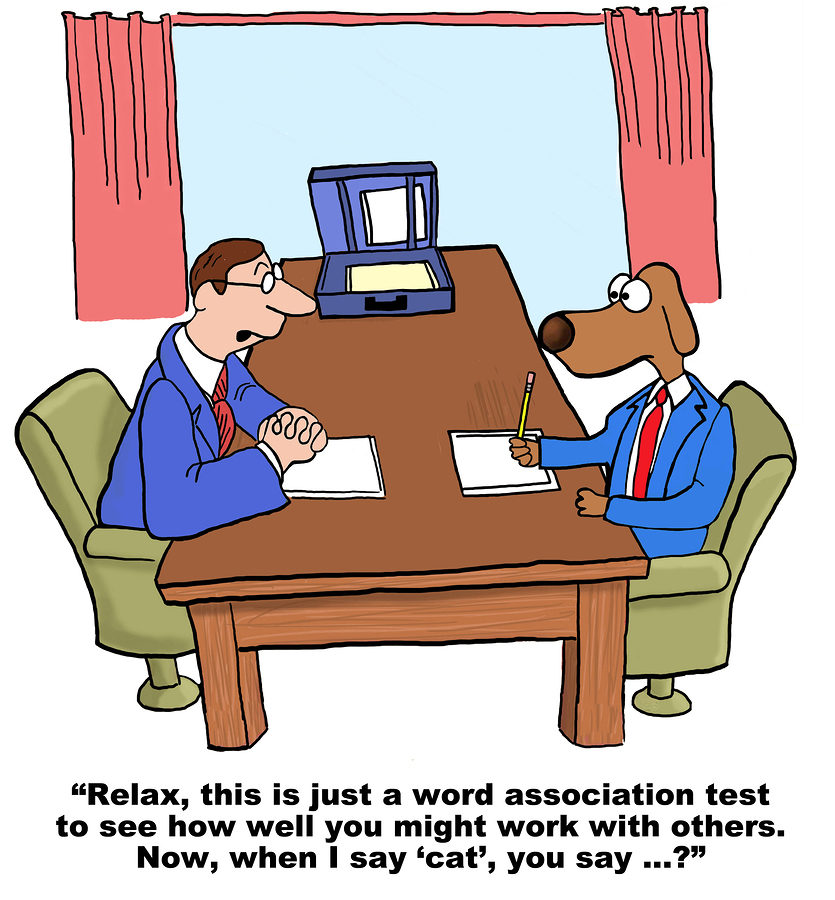Every person has a team communication role. Extended DISC describes each of the primary relationship roles based on a person’s DISC profile.
Your primary team communication role
Your DISC profile determines your team communication role. The purpose of knowing your team role is to gain better insight into how you function in a group setting. The roles are Changers, Planners, Developers, Stimulators, Participators, Doers, Assurers, and Specialists. Each role has specific ways to doing things in a team. The team role is decided by where your DISC profile falls on the DISC Diamond.
Changer team communication role
 Changers are a group’s lone wolves and prefer to focus on the future. Controlling actions are important. They do not care about titles or status because they are “above them”. The Changer has a ready answer and is not afraid to voice opinions. Some see Changers as intimidating and believe they can underestimate others. In reality, they wants others to first show what they can achieve before they give attention and acceptance into the group. Changers are always looking for challenges and are not afraid of the unknown. Routines are boring. Changers want to be in the front line developing new things and creating something unique. They don’t like to admit defeat or to backtrack. As a goal oriented people they are ready to adapt into new groups and situations quickly.
Changers are a group’s lone wolves and prefer to focus on the future. Controlling actions are important. They do not care about titles or status because they are “above them”. The Changer has a ready answer and is not afraid to voice opinions. Some see Changers as intimidating and believe they can underestimate others. In reality, they wants others to first show what they can achieve before they give attention and acceptance into the group. Changers are always looking for challenges and are not afraid of the unknown. Routines are boring. Changers want to be in the front line developing new things and creating something unique. They don’t like to admit defeat or to backtrack. As a goal oriented people they are ready to adapt into new groups and situations quickly.
They may regard teamwork as a waste of time, but also as a means to get information to others. Changers see their team communication roles as a way to deliver their own messages. They decide what to talk about. When it comes to deciding for a team, they want to be the decision-maker even if it requires risk. They are not patient in listening to their team members.
They motivate their team by driving hard, stirring action, and keeping team moving. Changers do things their own way, do it quickly, and get bored easily. However, the team will be rewarded working with Changers because they won’t get stuck, new ideas and tasks keep coming up and problems are quickly resolved.
Influencer team communication role
 Influencers create ideas and focus on change and moving forward. They can influence others, do not hesitate, and rely on instincts. They like taking part in many different kinds of groups, settings and roles. Others see Influencers as open and sociable, but somewhat self-absorbed and not good listeners. In reality, they are so active they don’t have time to stop and think about others, even if they’d like to. Influencers like to express opinions and tries to persuade others to agree. They will attempt to stand out in a group. Focusing on one thing is difficult since they are better at creating rather than executing.
Influencers create ideas and focus on change and moving forward. They can influence others, do not hesitate, and rely on instincts. They like taking part in many different kinds of groups, settings and roles. Others see Influencers as open and sociable, but somewhat self-absorbed and not good listeners. In reality, they are so active they don’t have time to stop and think about others, even if they’d like to. Influencers like to express opinions and tries to persuade others to agree. They will attempt to stand out in a group. Focusing on one thing is difficult since they are better at creating rather than executing.
Influencers see teamwork as a way to motivate the group, but also to delegate boring routines. They are the ones who drive conversations, introduce new ideas, and prevent stalling. As decision makers, Influencers make quick decisions, bring up ideas and don’t look at options. They will motivate the team by creating passion through their speaking, supporting and encouraging. Influencers will keep it simple and do not spend too much time deciding. Their team communication role benefits the team by keeping it more dynamic, open, and inclusive.
Planner team communication role
 Planners are very systematic and want to know where things are going and how to get there. Planners seek to develop and change, but with care and control. They prefer people to focus when working in a group. Thus, people find them to be reliable and balanced, but also stubborn and rigid. They want to make sure that nothing unexpected happens. Planners finds it very important to stand behind their words and expect the same. Planners like to work hard until projects are complete.
Planners are very systematic and want to know where things are going and how to get there. Planners seek to develop and change, but with care and control. They prefer people to focus when working in a group. Thus, people find them to be reliable and balanced, but also stubborn and rigid. They want to make sure that nothing unexpected happens. Planners finds it very important to stand behind their words and expect the same. Planners like to work hard until projects are complete.
They see a team as a means to ensure the correct assignment of tasks and a way to deliver information. In addition, teams are needed from the organization’s point of view. In a team, they will be the person who critiques and questions. They will defend principles and analyze things. When it comes to making decisions in a group they will focus on principles, reasons for them, and push the team to accept the decisions.
They motivate their team through their commitment, but may forget to encourage others. In addition they can come across as inflexible. However, they excel at focusing, not giving up easily until things are done, and following rules. Group members will receive fair treatment and groups will stay on track.
Stimulator team communication role
 Stimulators are extremely open and positive, seeing good in every person and situation. They steer away from negative situations and live through emotions. Others find Stimulators positive and make friends easily. However, some people find Stimulators superficial and too relaxed. In reality, they want be part of many things and don’t find it necessary to focus on every detail. Stimulators know that reality is different from what we plan for. They like it when they are included and when there’s many things going on. Stimulators may not say directly what is on their mind if it may annoy others or lead to unpleasant settings. They like bringing up and being a part of new ideas.
Stimulators are extremely open and positive, seeing good in every person and situation. They steer away from negative situations and live through emotions. Others find Stimulators positive and make friends easily. However, some people find Stimulators superficial and too relaxed. In reality, they want be part of many things and don’t find it necessary to focus on every detail. Stimulators know that reality is different from what we plan for. They like it when they are included and when there’s many things going on. Stimulators may not say directly what is on their mind if it may annoy others or lead to unpleasant settings. They like bringing up and being a part of new ideas.
Stimulators see teamwork as a positive way to interact, motivate and exchange data. Their team communication role is one of the talker, but in a way that maintains good atmosphere. In addition, they can bring up new ideas in positive ways. Stimulators want decisions that make everyone happy. They prefer to spend time with people and focus on making a positive impact. Routine tasks are avoided and they may stray from assigned tasks. However, they will become involved in working with others. They bring new thoughts, good vibes to their team. Teams are likely to enjoy being together.
Participator team communication role
 Participators are pleasant and friendly. They prefer to interact with familiar people. Exchanging thoughts and feelings are necessary before actions. The Participator finds it important that everyone in the group gets to perform and express their feelings. Others find Participators easy to be with and honest, but also not easily able to express honest opinions. In reality, Participators just find it very unpleasant bringing up negative issues which could offend others, especially if they had to be justified. They enjoy working and being with others. They don’t mind guiding, helping, or listening to others. Their own priorities are not as important as working well together. They don’t want to decide for others.
Participators are pleasant and friendly. They prefer to interact with familiar people. Exchanging thoughts and feelings are necessary before actions. The Participator finds it important that everyone in the group gets to perform and express their feelings. Others find Participators easy to be with and honest, but also not easily able to express honest opinions. In reality, Participators just find it very unpleasant bringing up negative issues which could offend others, especially if they had to be justified. They enjoy working and being with others. They don’t mind guiding, helping, or listening to others. Their own priorities are not as important as working well together. They don’t want to decide for others.
Participators find teamwork extremely vital to work. Teamwork is a way to ensure everybody does what he or she should and keeps members together. They are the ones who look for a compromise. Participators listen, helps, stays present, and participates. They will make cautious decisions after hearing what others have to say, but prefer not to be the primary decision maker. Participators understand people, focus on positives, and can listen and discuss. They will do what they promise and are will act on instructions. Everyone’s opinions are noted and treated fairly. Their main team communication role is to promote discussion and exchange of thoughts.
Communicator team communication role
 Communicators are easy-going, sociable and amiable. In addition they understand a group’s rules and regulations. They excel at making boring matters interesting. Communicators seek change, but not at the expense of people or the organization. Others find them a little mysterious and evasive. In reality, Communicators prefer to avoid quarrels or interfering with others especially if it prevents revealing all of their own feelings to others. People knowing what they are expected to do is preferred. Meeting different kinds of people in positive settings is motivating. They enjoy investigating things, hearing different points of view, and creating new ideas. However, they do not always want to push ideas aggressively.
Communicators are easy-going, sociable and amiable. In addition they understand a group’s rules and regulations. They excel at making boring matters interesting. Communicators seek change, but not at the expense of people or the organization. Others find them a little mysterious and evasive. In reality, Communicators prefer to avoid quarrels or interfering with others especially if it prevents revealing all of their own feelings to others. People knowing what they are expected to do is preferred. Meeting different kinds of people in positive settings is motivating. They enjoy investigating things, hearing different points of view, and creating new ideas. However, they do not always want to push ideas aggressively.
They see teamwork as a pleasant way to meet people and gather information in a positive setting. Errors are corrected in a positive way while familiar topics are presented in new ways. They are positive team players so they want to hear everyone’s opinions before making decisions. Sharing responsibility for decisions comes easily and focusing on meaning of information is emphasized. They guide and praise positively and bring up new ideas. However, they avoid errors and may stay to discuss or think more. Routine jobs may get boring.Their main team communication role is to bring positive energy to relevant people. In addition, they help tone down discord and keep everyone informed on issues.
Doer team communication role
 Doers are calm. They prefer to work at their own pace and not be rushed. Doers focus on reliability, justice, familiar people and avoiding overly excitable settings. Others find them very reliable and calm, but also slow and uncertain. In reality, their apparent slowness is due to their desire to do things correctly and not be a bother to others. Doers perform a lot of behind the scenes work for the benefit of others. Preparing for tasks takes more time for them than others. They don’t mind recurring tasks. Even when focusing on their own responsibilities, they enjoy being a part of a tight and secure group. Since they prefer familiar surroundings, they tend not to get involved with many different groups.
Doers are calm. They prefer to work at their own pace and not be rushed. Doers focus on reliability, justice, familiar people and avoiding overly excitable settings. Others find them very reliable and calm, but also slow and uncertain. In reality, their apparent slowness is due to their desire to do things correctly and not be a bother to others. Doers perform a lot of behind the scenes work for the benefit of others. Preparing for tasks takes more time for them than others. They don’t mind recurring tasks. Even when focusing on their own responsibilities, they enjoy being a part of a tight and secure group. Since they prefer familiar surroundings, they tend not to get involved with many different groups.
Teamwork is an extremely important way to work, help each other, and insure that everything goes right. They take responsibility for what they do and uphold joint contracts. Doers prefer to stay in the background. They don’t want to be the first to decide, and therefore, will focus on prudent decision-making. The team will be more helpful, calmer and more reliable. Cautious Doers will need others to motivate them. When given a task, they will follow through and take responsibility. They work at a steady pace and will slow down when needed.
Assurer team communication role
 Assurers are quiet, focused, thorough and calm. They dread mistakes and want to work at their own pace. Others find them private, exact and preferring to observe. In reality, they are considerate and often don’t speak out without a chance to process the conversation. They need to know what others expect and support to process change. Assurers prefer things to proceed in an orderly fashion. They don’t like surprises. Therefore, they may not interact a lot with others. However, they do find it important to have support when needed.
Assurers are quiet, focused, thorough and calm. They dread mistakes and want to work at their own pace. Others find them private, exact and preferring to observe. In reality, they are considerate and often don’t speak out without a chance to process the conversation. They need to know what others expect and support to process change. Assurers prefer things to proceed in an orderly fashion. They don’t like surprises. Therefore, they may not interact a lot with others. However, they do find it important to have support when needed.
Teamwork is an important means to make the correct choices, delegate tasks and get people to assume responsibility. Assurers will often adapt to the role of performers, but prefer to stay in the background. Sticking to the plan, aiding in making decisions, and looking at all possible outcomes are important. This can cause delays in the process. They motivate their team by giving information and staying on schedule, but can also forget the need to motivate. Assurers are seen as trustworthy workers, but careful and preferring to stay with the same things. They are the doers of the group and spot possible errors.
Specialist team communication role
 Specialists focus on their own matters and let others take care of their own business. High quality work is important so time limits and other people’s pressures are not as effective. In the group they are seen as someone who knows their tasks and roles, but keeps a distance. In reality the Specialist is shy. Since they want to be correct, they may not speak up unless they are certain they are. Speaking on limited occasions will be highly detailed and frustrating to others. It is important that others don’t interfere with their work.
Specialists focus on their own matters and let others take care of their own business. High quality work is important so time limits and other people’s pressures are not as effective. In the group they are seen as someone who knows their tasks and roles, but keeps a distance. In reality the Specialist is shy. Since they want to be correct, they may not speak up unless they are certain they are. Speaking on limited occasions will be highly detailed and frustrating to others. It is important that others don’t interfere with their work.
They may see teamwork as a waste of time, but could be good for others. Also, teams may slow down those who rush. They calmly take care of own tasks and converse only when it is needed. Specialists do not overly show emotions. Team decisions are noticed only when the matters concern them. Otherwise, they prefer not to take part. They believe everybody needs to self-motivate. They will give more information than may be needed when asked. Specialists are seen as reliable, but constantly in careful thought process. The team will benefit by their analyses, avoiding unneeded risks, and following rules.
Developer team communication role
 Developers are steady and prefer focusing on issues. In groups they tend to see things one way. They focus on facts over feelings and prefer to keep distance from others. Groups are a chance to develop, plan and create something new. Others may see Developers as overly critical. In reality they just do not believe in one truth. They fear over excitement can lead a group to lose rational thinking. They do not want to share tasks with others because they do not believe that the others can do it their desired way. Developers find it important stand out and above the rest of the team.
Developers are steady and prefer focusing on issues. In groups they tend to see things one way. They focus on facts over feelings and prefer to keep distance from others. Groups are a chance to develop, plan and create something new. Others may see Developers as overly critical. In reality they just do not believe in one truth. They fear over excitement can lead a group to lose rational thinking. They do not want to share tasks with others because they do not believe that the others can do it their desired way. Developers find it important stand out and above the rest of the team.
Teams are inefficient ways to get things done. However, it can be a means to gather more information. They will make analytical summaries and look at new ways of doing things. When it comes to making decisions they want the last word and may not take part in group discussions. They believe everyone should be self-motivated and focused in own areas. Developers may see themselves as above simple tasks. Groups benefit from this team communication role through ongoing evaluation of results, clear opinions and reasons, and lots of new thoughts.
Team communication roles in practice
Your preferred team communication role helps you find which team members tend to be easier to work with and which ones may be more challenging. Remember, there are no good or bad roles. Roles that are similar to our own tend to be more comfortable to work with while roles that are opposite tend to be more challenging. However, team members that are similar can amplify strengths as well as weaknesses. In addition, team members that have other styles may help create a diverse team. We now know how we prefer to interact in team settings. We also know how to identify team styles of others. Put these two concepts together and modify your style to succeed with better results. Are you ready to impact your team?



